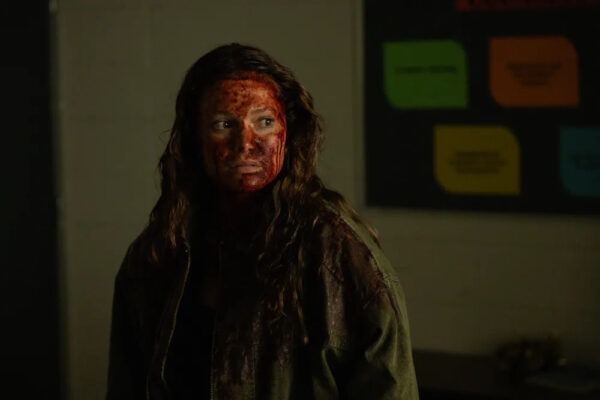
Writer/director Adam McDonald is back with a new zombie film, This Is Not A Test (2025).
[Read more…]The curated portfolio of film journalist Joe Lipsett
by Joe Lipsett

Writer/director Adam McDonald is back with a new zombie film, This Is Not A Test (2025).
[Read more…]by Joe Lipsett
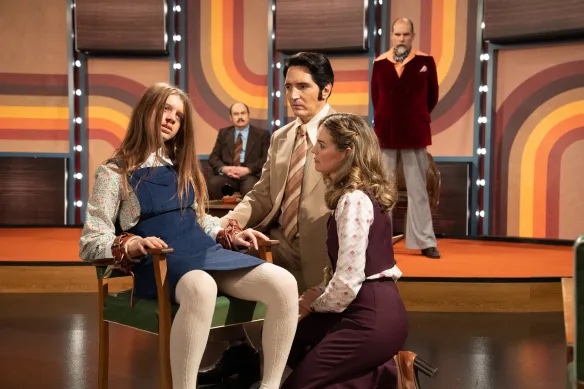
by Joe Lipsett

There’s something for everyone in writer/director Marc Price’s 2018 independent action comedy, Nightshooters.
[Read more…]by Joe Lipsett
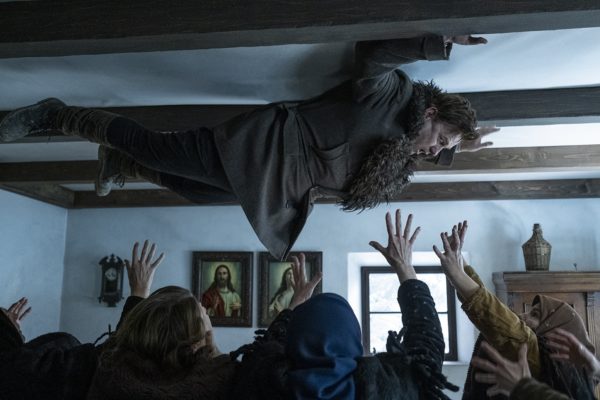
Post Mortem (2020), Hungary’s submission for the Best Foreign Language Oscar, is a visual spectacle about a small town caught in the throes of ghostly attacks.
[Read more…]by Joe Lipsett
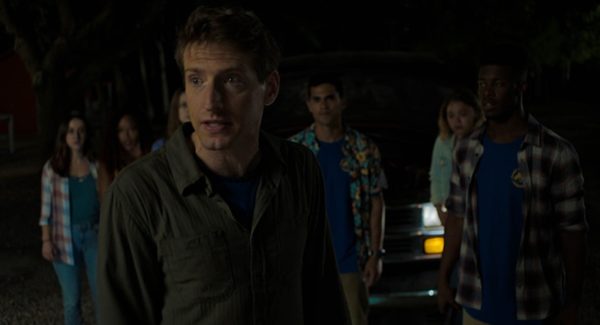
While Kevin Williamson and Wes Craven certainly didn’t invent the self-referential horror film, due to its pop culture footprint Scream has become a natural point of comparison for every post-1996 metatextual horror film. More than twenty years ago Sidney Prescott and Ghostface grossed $100M+ and, in the process, redefined the way that audiences — and filmmakers — considered how horror films are constructed. The proliferation of self-aware horror films in the 00s and 10s reflects this change (for better or worse) as it is now considered fair game to have characters acknowledge their predicament with a knowing wink to the audience, even while they run around screaming and dying.
Enter Brett Simmons‘ new horror-comedy, You Might Be The Killer, a film that gleefully comments on the tropes of the first cycle of 80s slasher films, even as it aims to replicate them, all while adopting an intriguing non-linear narrative structure that jumps back and forth in time. Although the film fails to stand on its own two feet by offering something new and unexpected, writers Simmons, Thomas P. Vitale and Covis Berzoyne do a good job of constructing a film that honours the conventions of the subgenre while simultaneously referencing and abiding by them.
You Might Be The Killer begins in media res as camp director Sam (Fran Kranz) calls his best friend Chuck (Alyson Hannigan) in the middle of a massacre. He quickly explains that the majority of the camp counsellors have been murdered by a bone-machete wielding masked man and that he has barricaded himself inside a cabin in the hopes of staying alive. Chuck is a video store employee and Sam’s go-to horror movie expert so he enlists her help in figuring out how best to survive. Thus begins a loose sort of bracketing device in which Chuck asks Sam questions to uncover the events that unfolded, which prompts the narrative to double back on itself (often using a title card indicating the number of dead counsellors to help audiences keep track of the timeline).
Although the film initially plays up the mystery of the killer’s identity, the film’s title a dead giveaway as to who is responsible. After a brief period, Simmons, Vitale and Berzoyne lay their cards on the table and acknowledge that Sam has been murdering his employees in a kind of fugue state; at this point the focus of You Might Be The Killer shifts from the mystery of “who” is the killer to the “why” the murders are happening, as well as “how” Sam can survive his situation. Throughout this process, Chuck reiterates the rules of the slasher genre according to its most popular entries (all while impressively manning the register and sassing customers who eavesdrop of the phone call).
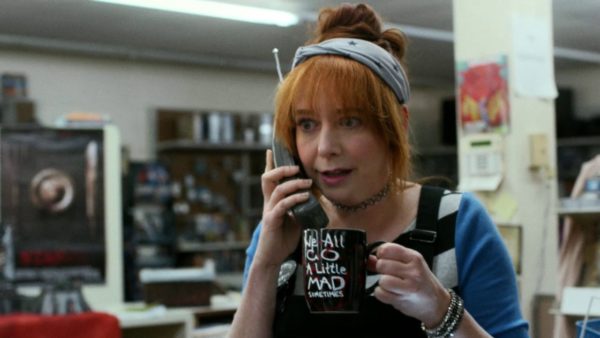
Despite its meta elements, I would argue that the closest comparable film is not Scream, but 2015’s The Final Girls. Both films gently mock and play with the conventions of the slasher film while stringently adhering to them. Admittedly The Final Girls has a great deal more heart (and gender politics) working in its favour, but both films are fun, spirited endeavours that have a breezy vibe to them, thanks to a winsome cast.
The success of You Might Be The Killer is 100% thanks to Kranz and Hannigan. The two actors bring a great deal of audience goodwill from their various Joss Whedon projects to the production and their warm, empathetic screen presence helps engender audience investment. Even after it is revealed that Sam is the killer, Kranz manages to make him sympathetic and likeable. Hannigan arguably has the more challenging role of the two, given that she is divorced from all of the action; even stranded in a single video store set and forced to act all of her scenes on the phone, she’s a sheer delight. She infuses Chuck’s know-it-all, chipper, informative exposition with charm, easily making Chuck one of the highlights of the film.
Alas, despite the two strong performances anchoring the film, You Might Be The Killer peters out around the one hour mark. After a while it becomes clear that the film is using the self-referential material to prop itself up, and doesn’t have much else to offer. Little work is done to invest the other counsellors with distinct personalities, so watching the nearly dozen murders proves to be a rote exercise (even if the gore and the direction is ably and enthusiastically executed).
Ultimately You Might Be The Killers overstays its welcome and sputters to a (foregone) conclusion that relies too much on unearned audience investment in secondary characters who are little more than types. No matter how amusing the callbacks to 80s slashers are or how strong the two lead performances are, You Might Be The Killer still winds up feeling a little empty.
3.5/5
by Joe Lipsett

Ray Xue’s feature directorial debut, Extracurricular has a solid hook: the film is about a group of sociopathic teens who casually plan and execute murders in between College applications, book reports and dance recitals. Following in the footsteps of last year’s festival hit Tragedy Girls (albeit in less satirical fashion), Extracurricular aims to be shocking and topical but winds up missing the mark, despite confident direction by Xue and dedicated performances by the young cast.
The film opens solidly with a double murder right off the top. After a brief introduction, a pair of twenty-something lovebirds are awoken by the sound of their car alarm in the middle of the night. The man goes to investigate and never returns, leaving his girlfriend to discover his mutilated body outside and a group of neon-masked villains lining the driveway. After a brief chase, the woman is also dispatched by The Purge-like killers.
There’s no mystery about the identity of the murderers: the very next scene finds a foursome of teens chatting animatedly in a diner about what they felt worked and what didn’t. Aggressive leader Ian Gordon (Spencer Macpherson) is a nihilist, while his long haired brother Derek (Keenan Tracey) is flippant and casual. Derek’s girlfriend Jenny (Brittany Teo) initially presents as a little princess-y (she complains about the outdoor murder location), but is quickly revealed to be the most ambitious and murder-focused member of the group. Circling the periphery is defacto protagonist (or is it anti-hero?) Miriam (Brittany Raymond), who is detail-oriented but cautious.
Following the murders, writers Matthew Abrams and Padgett Arango slow things down. We see the foursome at school, where they’re revealed to be popular, scholastic, and involved in social activities. They just so happen to also use study period to plan future murders and survey social media for news of their extracurricular exploits. Abrams and Arango never quite nail the tone of the film, so it is unclear if audiences are meant to cheer for these murderous teens or condemn their psychopathic tendencies. There’s a suggestion that their boredom, the small town they live in and a lack of parental supervision has contributed to their development, but these ideas are never fully explored.
And therein lies Extracurricular‘s greatest problem. The script is poorly constructed, which hampers the film to such a degree that even its strengths can overcome the writing deficiencies.
While there are no hard and fast screenwriting rules that must be obeyed, there are several near-universal screenwriting techniques that successful writers use. And for a good reason: they work.
Abrams and Arango adhere to a fairly traditional structure for the first hour or so of the film, and then they make the ill-advised decision to abandon their course of action in favour of a series of unexpected – and unsatisfying – narrative developments. This proves to be their — and the film’s — undoing.
The most grievous mistake they make is asking the audience to invest in characters without paying that investment off. If, for example, the vast majority of the film is centered around one character, the audience is likely going to assume that individual is your protagonist. If this character is given a love interest and a promising story arc, the audience will expect these elements to amount to something. If other characters are given backstories about absent or fractured relationships with their parents, this information might be seen by audiences as relevant to the story’s outcome.
Unfortunately this is not the case with Extracurricular, which introduces all of these components, then fails to address them or pay them off. And while this may seem like a daring or risqué inversion of audience expectations in an attempt to do something unique and out of the box, the reality is that most of the climax feels out of the blue, undercooked and, unfortunately, quite unsatisfying.

This is a shame because Xue’s direction is solid. He has a good understanding of how to light and shoot kill sequences, alternating between jerky handheld action and steadicam long shots. There’s also a sense of experimentation in the way he uses the camera, such as his slow 360 degree pan around the room in a scene when the group discusses which mask to wear for a Halloween kill. Traditional cutting would have sufficed, but the circular motion is more engaging and reinforces the meandering nature of their conversation.
The young cast is also extremely game, particularly Teo and Raymond. As the not-so-secret sadist, Teo is frighteningly efficient — what may be a strange hobby for the others comes off as a vocation to Jenny. Raymond, meanwhile, has the most meaty material to work with; Miriam is not only the most apprehensive member of the group, she is negotiating her burgeoning feelings for a classmate, videographer Layla (Shanel Maida). The chemistry between the pair is appropriately romantic, particularly in the dreamy sequences when Layla films Miriam dancing for her College application. Miriam’s slow drift away from her homicidal friends is Extracurricular‘s most engaging storyline, which only makes it all the more frustrating when Abrams and Arango abandon it in favour of a series of twist endings.
Sadly, despite strong direction and dedicated performances by the cast, the film is undone by poor scripting decisions. There’s a kernel of something great here, but Extracurricular ultimately fails the written.
2/5